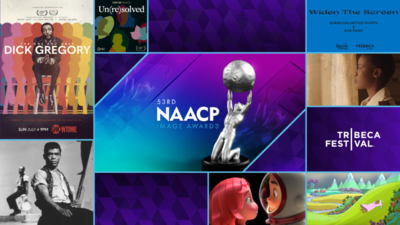
BY ZACHARY WIGON |
Racking Focus: 'Don Jon' And New Distribution Strategies
Joseph Gordon-Levitt's 'Don Jon' points a way toward a new kind of distribution strategy for studios.

I've written in this column before about a future in which Hollywood's lower-budgeted fare gets increasingly farmed out to the indies for distribution, which seems like an intelligent and likely prospect for future studio business models. If studios continue to move toward a tentpole model, why bother to make smaller pictures for, say, $15-30 million when they can buy them at festivals for significantly less?
When studios begin distributing films like this on a much larger scale, an entirely new distribution model may find itself erected.
The earlier example I seized on this year was The Way, Way Back, a (relatively) expensive Fox Searchlight pickup at Sundance 2013 that made $23 million in international box office. The film hits an established Hollywood genre—the coming of age movie—with aplomb, and while it carefully meets the demands of that genre, it also exceeds them in entertaining fashion.
I'm a little late to the game on this next film, but I saw Don Jon this past weekend and was pleased to find that it, too, is another fine example of the indie film that puts a fresh spin on a stale studio genre. Written, directed by, and starring Joseph Gordon-Levitt, the film traffics in the realm of romantic comedy, but it's ultimately way too smart to be tied down by that genre's limitations and obligations. The expected part of the narrative is serviced by a romance between Levitt's Jon, a smooth ladies man from Staten Island, and Barbara (Scarlett Johansson), the woman of his dreams.

While this part of the film is entertaining, sufficiently so to provide audiences with the feeling that they've gotten their money's worth, the film becomes something else entirely with the introduction of Esther (Julianne Moore, superb), an woman with some unknown sort of baggage who enters Jon's life unexpectedly. As Esther enters the film, Don Jon announces itself as a singular film, not a romantic comedy at all but rather a unique work that utilizes the conventions of that genre in order to create something refreshingly new.
Don Jon is a model of how future studio releases might work. The film was bought by Relativity for $4 million (at Sundance 2013), with a $25 million P&A commitment. Thus far, it's made $30 million in international box office after five weeks of release. When one factors in ancillary revenue streams, there's no question the film will make a profit.
If studios continue to move toward a tentpole model, why bother to make smaller pictures for, say, $15-30 million when they can buy them at festivals for significantly less?
On its own, a film like Don Jon may not seem (at first glance) like a brilliant model for the studios to hinge their bets on - it's not a giant moneymaker, and public companies look best with giant smashes when they want to boost their stock prices - but the Don Jon model is, as tech companies like to say, "scalable." It's a business model ripe for utilization within a volume distribution strategy. If costs on film acquisitions are kept reasonable, and studios buy ten times as many indie/Hollywood hybrids (films like Don Jon or The Way, Way Back) each year, wouldn't a handsome profit begin to seem more than sensible?
Sure, probably none of the films would be giant smashes, but the odds are that plenty would pull in small profits; if a few tanked, the loss wouldn't be all that bad because the acquisition price is low to begin with, relative to the cost of producing a film that is commensurate in scope. When studios begin distributing films like this on a much larger scale, an entirely new distribution model may find itself erected.

